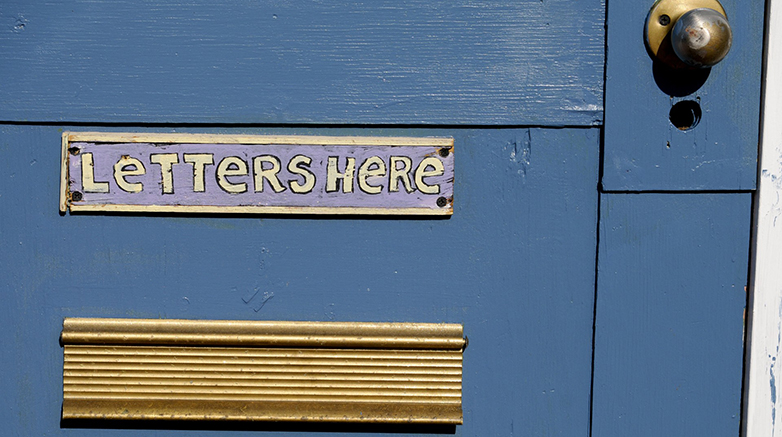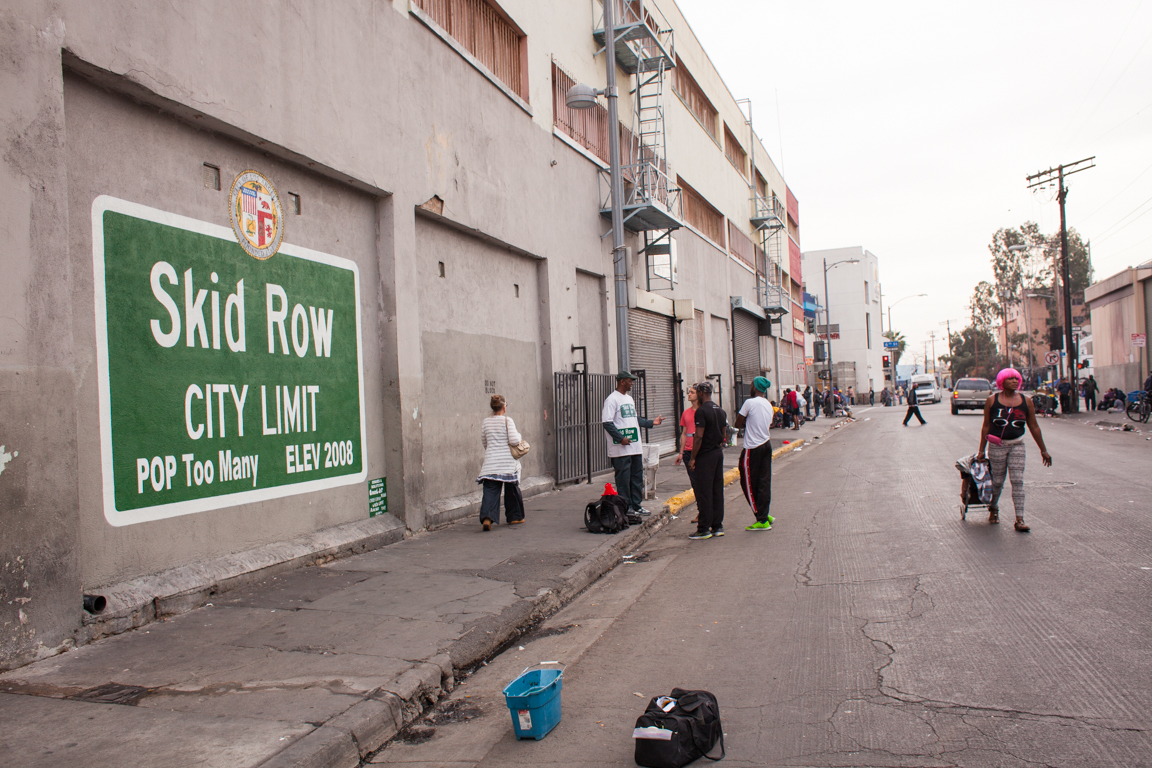Re “Encouraging News for Cell Tower Opponents”
[Editor’s Note: The leaders in the four-month fight to prevent a cell phone tower from being placed atop the Cash ‘n Carry store at the corner of Stevens Avenue and Sawtelle Boulevard, sent the following update to their neighbors at the weekend.]
Hello, everyone.
We have been waiting several weeks while the Planning Dept. evaluates our comments and opposition to the proposed T-Mobile cell phone site at Cash’n Carry.
The Director of Community Development, Sol Blumenfeld, is required to make a decision this month.
But we have a reasonable chance of defeating this if we stick together.
It is important that the city feels the concern from us in the form of emails and phone calls. If they decide to grant the permit, we can appeal to the city Planning Commission, and then the City Council. It is often there that communities finally win. (See the attached below.)
We all understand the visual and health concerns that compel us to oppose this project.
However, we need to recognize the rules by which the city must operate, and how Cash’n Carry and T-Mobile will try to force the project through.
The city has a code applying to cell phone stations and states that they should be placed at sites that already have transmitters or placed inside of existing building features.
Only as a last resort should there be a roof addition, like the Cash’n Carry proposition. The applicant, T-Mobile, is required to perform a “good faith” effort to find a site that follows the rules.
(T-Mobile uses Sequoia Company to find locations and negotiate leases with property owners. That is who is actually doing the application.)
In their application, T-Mobile has identified several alternative sites that would work, and gives reasons why they can’t be used, claiming they must locate at Cash’n Carry.
Among those alternative locations are two that are better than Cash’n Carry. Roll ‘n Rye at the Studio Village Shopping Center already has a cell phone site. It would be a co-location, as preferred by the code.
EZ-Lube also is interested in housing the T-Mobile site and might enclose the cell site in a remodel. Both of these commercial locations are well away from homes and schools.
T-Mobile has said they are not interested in the EZ-Lube site because of the presence of petroleum products. They have said that there are serious gaps in their signal coverage and have a right to fix them with a new cell site. They will say that the other sites can’t be used. They say the 1996 Telecommunications Act prohibits the city from denying the permit for Cash’n Carry.
T-Mobile's entire position is based on saying that they have to locate at Cash’n Carry.
We have learned that T-Mobile chose Cash’n Carry because the owners at Studio Village Shopping Center wanted a higher price. When they say they can’t use the shopping center location, they are lying.
We argue that the city can and should deny the permit because the proposed site is disfavored by the city code. We insist that the Telecommunications Act does not apply because better sites are available.
We can demonstrate there are no gaps in their service.
We challenge the evidence that T-Mobile uses to show that they have signal gaps by making calls on a T-Mobile phone at those locations.
We have made a clear case that the Cash’n Carry location would adversely affect the neighborhood and that T-Mobile is not being truthful about why they want to use Cash’n Carry.
I will attach documents submitted to the city and a list of important links. Please contact me if you want more information. The website has been updated: stopsawtelletower.com
Our correspondence with the city:
Bryan Tjomsland
11235 Stevens Avenue
Culver City, CA 90230
April 4, 2010
Re: Proposed T-Mobile cell tower at the Cash’n Carry
Hello Sol and Thomas,
Thank you for forwarding the T-Mobile response on March 29. Upon review, their reasoning ignores or does not directly address many of the community concerns and perpetuates misleading information about the project. The key issues are whether Culver City has jurisdiction over this infrastructure development and if this project should be approved despite lack of compliance with the Municipal Code and over the adamant opposition of the community.
The project is highly objectionable to the surrounding neighborhood and beyond, and ignores Culver City Municipal Code’s Title 17 rules about placement of telecommunications sites. T-Mobile does not have a right to place a site wherever they wish. Under the Federal Telecommunications Act, they enjoy some protections, but those do not apply here. Cash’n Carry’s proposal is not compliant with the Culver City Municipal Code’s Title 17, Order of Preference and so should be subject to the highest level of scrutiny. The Municipal Code provides clear guidelines with regard to the acceptable placement of telecommunications facilities and even federal law recognizes “least intrusive” as a reasonable requirement by the city. The proposed Cash’n Carry site is neither least intrusive nor compatible with the neighborhood and will diminish the aesthetic character of the street as well as property values.
The argument to the contrary presented by T-Mobile represents a disregard for the concept of aesthetics, neighborhood character and community planning. The box-like 11-foot addition is most definitely a “new building feature” and runs afoul of the Code’s order of preference for new cell sites (as opposed to being integrated within the existing structure as some wording in the response suggests).
More importantly, the installation is not being co-located with existing, preferable (by all concerned) and available sites at Studio Village shopping center, which has a cell site currently and has expressed willingness to consider a lease. This document discusses:
1. The relevance of the Telecommunications Act to the T-Mobile application.
2. The comments provided by T-Mobile in response to the community concerns document provided to the city on Jan. 24, 2010.
3. Areas the community asks the city to address prior to making a decision on the application.
1. Relevance of the 1996 Telecommunications Act In their response, T-Mobile repeatedly evokes the 1996 Telecommunications Act. However, the protections provided by the law are not applicable here since:
2. The Act provides five separate and substantial protections for the telecommunications facility applicant in the amended 47 U.S.C. § 332 (entitled National Wireless Telecommunications Site Policy). Section 332 provides that: (a) the regulation of placement, construction, and modification of personal wireless services facilities by any state or local government shall not unreasonably discriminate among providers of functionally equivalent services.
Community response:
T-Mobile is not being discriminated against.
Rather, they are being directed to comply with the same requirements that the operators of existing sites at Studio Village are. If T-Mobile feels that they are being unfairly discriminated against, they should make that case now. There is no federal provision that the telecommunications provider is entitled to the most economical site, nor that they may site at any place that they wish.
(b) the regulation of the placement, construction, and modification of personal wireless service facilities by any state or local government shall not prohibit or have the effect of prohibiting the provision of personal wireless services;
Community response:
By denying the Cash’n’ Carry application, Culver City would not be denying “personal wireless service” since service exists now. There is no place in the affected area that does not have service. Not only would denial of the current application not “prohibit or have the effect of prohibiting the provision of personal wireless services”; the city is trying to facilitate the expansion of cell phone coverage by directing T-Mobile to alternative locations that would be consistent with the Municipal Code and the community’s interests. T-Mobile has not demonstrated that any gap in coverage exists. Their misleading “Existing Coverage Map” (which they now agree is not accurate) indicates areas of no coverage, which in reality do not exist. Their “Real Time Drive Test” data is contradicted by empirical and repeatable tests performed by members of the community. Every street indicated in red on the “Real Time Drive Test” was tested and performed without dropped calls on repeated practical tests from inside moving vehicles on various times and days. Assuming the signal power levels provided by T-Mobile remain constant, it would be reasonable for the city to publicly test a location where T-Mobile claims to have a coverage gap. Phone service from within a building is not specifically protected by the act. Further, some courts have said that the federal law only requires that service be available by one carrier in a community, but not necessarily by each and every carrier. It may be desirable for T-Mobile’s existing coverage to be improved. However, there is no basis for the Municipal Code governing placement of cell sites to be ignored. If T-Mobile prefers a lease from Cash’n’Carry over Studio Village for economic considerations, it is not entitled to protection from the Telecommunications Act.
(c) Once an applicant files a request for authorization to place, construct, or modify a personal wireless service facility, the governmental entity shall act on the application “within a reasonable period of time after the request is duly filed”;
Community response:
Culver City seems to be aware of the requirement.
(d) No state or local governmental entity may regulate the placement, construction, or modification of personal wireless service facilities on the basis of environmental effects of radio frequency emissions to the extent that such emissions comply with FCC regulations; and shall not prohibit or have the effect of prohibiting the provision of personal wireless services.
Community response:
The community recognizes the Federal Act’s prohibition on the city's authority to regulate placement of telecommunications equipment in order to protect people’s health.
(e) Any decision by a state or local governmental entity to deny an application to place, construct, or modify a personal wireless service facility shall be in writing and supported by substantial evidence contained in a written record.
Community response:
If a decision to deny is arrived at by the city, it should be provided in writing, supported by substantial evidence and according to record. In February 2010, the Seventh Circuit Court of Appeals clarifies the requirement and finds the minutes of a board meeting may serve as record and evidence. Such evidence might also include records of cell phone use in areas of disputed coverage and communications where the owners of the Studio Village shopping center indicate a willingness to consider a lease to T-Mobile. If T-Mobile prefers a lease from Cash’n Carry for economic considerations, it is not entitled to protection from the Telecommunications Act.
2. Comments on T-Mobile responses to the community’s objections:
T-Mobile response to section 5 (Better alternative locations exist):
If less intrusive sites that better comply with Culver City Municipal Code’s Title 17, Order of Preference are available (even if they would be more expensive to T-Mobile), the city has an obligation to the community to require the preferred site be utilized. T-Mobile says that they were “unable to procure a lease for the space necessary.”
“Inability to complete these negotiations” does not constitute unavailability of a site. If the negotiations were incomplete because a lease price was not agreed upon, T-Mobile is not protected by the Telecommunications Act.
The facts don’t support T-Mobile’s assertion that pursuing alternate locations — which they admit would be preferable locations — would be futile. Community representatives’ conversations with owners of both EZ-Lube and Studio Village indicate that those locations are potentially available.
Has T-Mobile provided the city with evidence of why the supposed negotiations with preferred sites failed? The protections provided by the Telecommunications Act of 1996 do not give telecom companies entitlement to the most economical locations. Instead, they need to pursue the least intrusive locations and should be in compliance with Culver City Municipal Code, specifying co-location and positioning of telecommunications equipment inside of existing structures.
T-Mobile response to section 1 (The application is misleading):
In their continued defense of the Cash’n Carry site, T-Mobile seems to agree with our assertions that their Existing Coverage Map is indeed misleading. Instead, they direct the city to consider only their real time drive data, which does not support their claims and is disproved by empirical and repeatable tests. Their real time drive data map indicates green and yellow coverage (the two highest levels) at the intersection of Stevens and Sawtelle despite their statement to the contrary (“…shows that the coverage at the intersection is marginal and at the fringe of LA02626 coverage”). These mischaracterizations are emblematic of the misleading information T-Mobile expects the city to accept.
As discussed in our original comments, the community has conducted and continues to conduct practical tests of the cell coverage in areas indicated as having low or no coverage by T-Mobile on their drive test map. The tests have resulted in no dropped calls from vehicles in the entire area depicted in red and gray. Furthermore, the Telecommunications Act provides telecommunications providers the right to fill “significant gaps in coverage,” not to continuously increase their level of signal distribution. Additionally, some courts have said that the federal law only requires that service be available by one carrier in a community, but not necessarily by each and every carrier.
T-Mobile response to section 2 (Aesthetic concerns):
T-Mobile completely fails to address the fact that the construction drawings submitted with the application indicate an exposed “Utility Run” on the south face of the building as specifically prohibited in Article 4 of the Culver City Municipal Code (“all cables for a facility shall be fully concealed from view and placed underground or inside of the screening or monopole structure supporting the antennas”).
The drawings, as submitted, contain false information and misrepresent the dimensions of the proposed installation. The city cannot be expected to approve and the community cannot be expected to evaluate an application that misrepresents the specific construction details of the proposed application. These details include the proposed setback of the new addition from the existing roof.
T-Mobile response to section 3 (Safety concerns):
The site is adjacent to residences on three sides and would have large banks of lead acid batteries and possibly a fuel supply on top of a commercial establishment. Currently, Cash’ n Carry appears to violate fire codes by having extremely tall stacks of flammable merchandise in an area that presumably is protected by a sprinkler system designed for “retail” areas. The existing fire suppression system would be inadequate to contain a fire with the concentrated fuel load of the stacked merchandise (see image on p.6, Suspected hazardous fire conditions).
The likely consequences of a fire in a building with toxic materials on the roof are overly hazardous to the adjacent residences.
T-Mobile response to section 4 (impact to surrounding property values):
The applicant asserts that being “integrated into the existing building,” the installation would be “visually imperceptible to the general public.” This statement is patently false. The addition certainly isn’t integrated into the existing structure as described by the Culver City Municipal Code. In reality, the installation is an awkward, oversized box sitting on top of the existing building, the size of which already threatens the visual composition of the quiet residential street. Anyone looking down the street would certainly perceive the misshapen building as being large and ugly. As demonstrated in the image on p.6 (proposed 11-foot high screen and existing homes), the existing street is one of the few palm tree-lined streets remaining in Culver City, composed of mostly single-story homes and presents a pleasant character. The proposed installation is obtrusive, clearly out of scale for the surrounding neighborhood and would greatly diminish the character of the street.
T-Mobile maintains that property values would be unaffected. This section of their response is written in the first person and refers to vague items like “the data that I have seen,” with no supportive information. As stated in the original community comments of Jan. 24, 2010, the Appraisal Institute, the largest global professional membership organization for appraisers, has educated its members that a cell tower should, in fact, cause a decrease in home value.
What is the “data” T-Mobile quotes? Can T-Mobile clarify who wrote the response?
3. Areas we ask the city to specifically address before rendering a decision:
1. Determine the exact reason that T-Mobile’s negotiations with the Studio Village supposedly failed. The city should require T-Mobile to comply with the Culver City Municipal Code order of preference relating to the addition of building features and colocation.
2. Require T-Mobile to specifically verify the exact nature of gaps in coverage, such as time and place where service is supposed to be not available.
3. Review Cash’n Carry’s compliance with the fire code, specifically stacked merchandise in the retail area (see p. 6).
4. Require clear construction details for review, including the setback of the proposed addition, and the placement of exposed cables on the south facade. The city should deny the application if the design is out of compliance with the municipal code .
Regards,
Bryan & Pirjo Tjomsland







